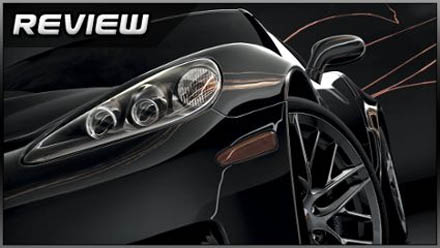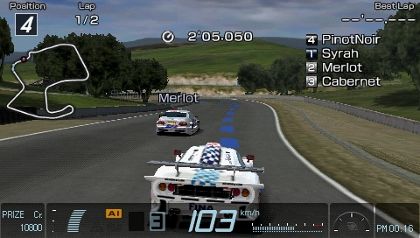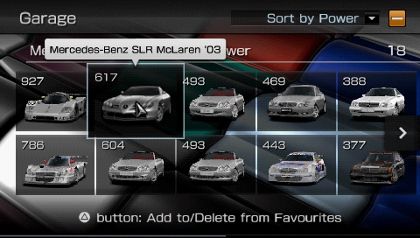
Like collecting cars? You’ll like Gran Turismo. Really like collecting cars? You’ll like Gran Turismo. Like driving ‘em too? You’ll like Gran Turismo. Like luxuriously upholstered backdrops, a sense of kinetic feedback, canny competitors and an online community? You’ll like… Oh.
The PSP version of Polyphony Digital’s phenomenal racing franchise has been chugging through development for over half a decade. Back in May 2004, the thought of hording and piloting posh rides on the go was the best publicity Sony’s fledgling Gameboy-killer could ask for – but the intervening years have brought with them handheld WipEouts, Mario Karts, Burnouts and OutRuns, and as GT finally rumbles into view alongside the retooled PSP Go, it’s clear that the old motor isn’t entirely comfortable with the new terrain.
Let’s start with the shiniest of the game’s bullet points: 800-plus fully licensed, meticulously assembled cars for the buying, racing and wireless trading. That’s easily the largest and most diverse vehicle suite ever rendered, and heaven forbid I should insult the countless man-hours of research involved by attempting to gloss it, meagre automobile enthusiast that I am. Here’s the complete list. Try not to dribble. Many of these rides have been sourced from Gran Turismo 4 (to whom the game also owes the majority of its 30-odd reversible courses) but a hundred or so are brand spanking new.
After the comparative chaos of a Motorstorm (the latest iteration of which, Arctic Edge, is next in line on my review sheet), or even a DiRT, GT‘s priestly dedication to auto-thenticity feels a little bland. With vehicle models soaking up the bulk of the game’s gigabyte install, there’s naff all in the way of cinematic trickery like momentum-induced tunnel vision, camera agitation and so on, nor are the environments interesting to drive through – mere thinly textured scaffolds for Polyphony’s superlative car physics system.







 Satoru Iwata Video Interview - the late Nintendo president spoke with Kikizo in 2004 as 'Nintendo Revolution' loomed.
Satoru Iwata Video Interview - the late Nintendo president spoke with Kikizo in 2004 as 'Nintendo Revolution' loomed. Kaz Hirai Video Interview - the first of Kikizo's interviews with the man who went on to become global head of Sony.
Kaz Hirai Video Interview - the first of Kikizo's interviews with the man who went on to become global head of Sony. Ed Fries Video Interview - one of Xbox's founders discusses an epic journey from Excel to Xbox.
Ed Fries Video Interview - one of Xbox's founders discusses an epic journey from Excel to Xbox. Yu Suzuki, the Kikizo Interview - we spend time with one of gaming's most revered creators.
Yu Suzuki, the Kikizo Interview - we spend time with one of gaming's most revered creators. Tetris - The Making of an Icon: Alexey Pajitnov and Henk Rogers reveal the fascinating story behind Tetris
Tetris - The Making of an Icon: Alexey Pajitnov and Henk Rogers reveal the fascinating story behind Tetris Rare founders, Chris and Tim Stamper - their only interview? Genuinely 'rare' sit down with founders of the legendary studio.
Rare founders, Chris and Tim Stamper - their only interview? Genuinely 'rare' sit down with founders of the legendary studio. The History of First-Person Shooters - a retrospective, from Maze War to Modern Warfare
The History of First-Person Shooters - a retrospective, from Maze War to Modern Warfare